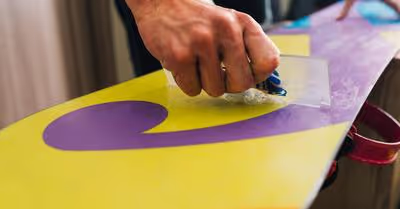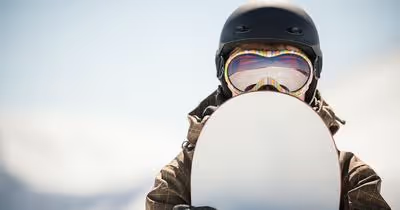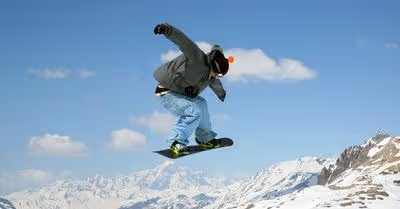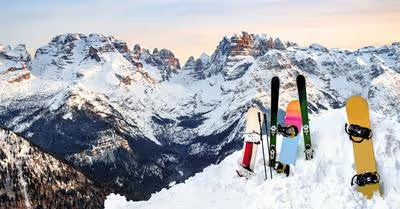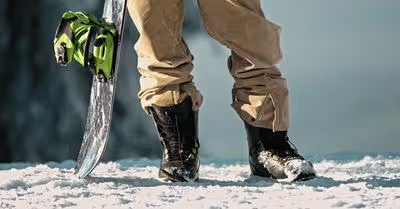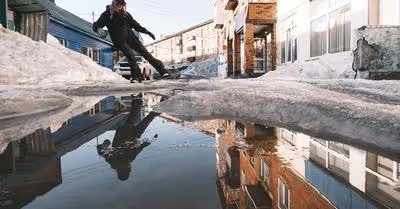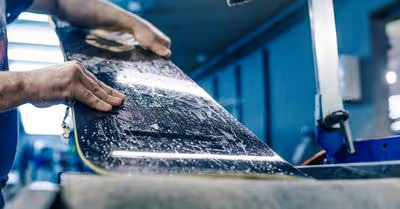Table of Contents
What is a Directional Snowboard?
As an avid snowboarder, I've been fascinated by the various types of snowboards available on the market. One type that often stands out due to its distinctive shape and style is the directional snowboard.
A directional snowboard is a type of snowboard that features a longer nose and a shorter tail, making it ideal for riding in one direction. This unique design with a directional shape offers more control and precision when making turns or carving on groomed slopes, powder, or deep snow.
These snowboards are specifically designed for riding forward, making them perfect for backcountry and all-mountain snowboarding. The side cuts and inserts of a directional board are usually set back, giving it a steeper kick in the nose. This helps you maintain better float and handling in various snow conditions.
Additionally, the flex pattern in most directional snowboards tends to be stiffer towards the tail. This provides a good balance between stability and responsiveness.
While it's true that directional snowboards aren't the best-suited choice for freestyle tricks – as taking off and landing switch might be more challenging – they sure outperform other types of snowboards in accomplishing tasks like carving and speed control. This video provides more insights about a directional snowboard.
Shapes and Types of Snowboards
Exploring the world of snowboards is an exciting journey, and understanding their diverse shapes and types can elevate your riding experience. Here are the shapes and types of snowboards.
Directional Twin
A Directional Twin snowboard is similar to a twin snowboard but with a slightly different shape, making it more suited to all-mountain riding. It has a symmetrical nose and tail.
However, the binding inserts are slightly rearward, making these snowboards ideal for riding forward. Watch this video to learn more about directional twin snowboards.
Twin Boards
Twin Boards have a symmetrical shape and can be ridden in either direction. This snowboard shape is perfect for freestyle riders who need the ability to initiate tricks and land in either direction. These boards are also known as "True Twin" snowboards due to their completely symmetrical design.
All Mountain Snowboards
All Mountain Snowboards are the most versatile option, as they are suitable for various terrains and snow conditions. They are a combination of twin and directional snowboards featuring a mix of both shapes.
Now, let’s see how the different types of snowboards compare.
Characteristics Of Directional Snowboards
As an enthusiastic snowboarder, I've had the privilege of exploring the diverse world of snowboard shapes, and one type that stands out is the directional snowboard.
Let's explore the unique characteristics that make these boards a standout choice for riders seeking control and precision in their snowboarding adventures.
Flex Patterns
Directional snowboards tend to have a specific flex pattern. Generally, these boards have a stiffer flex towards the tail, making them more responsive while riding forward and aiding in carving precision.
Meanwhile, the nose of the board might have a softer flex, allowing easier entry into turns and better performance in powder.
Riding Switch
One aspect of directional snowboards to consider is their ability to ride switch (riding with your non-dominant foot forward). As these boards are designed with a primary direction in mind, they are less optimal for ride switch compared to less directional boards like twin or directional twins.
While it is possible to ride switch on a directional snowboard, it might not feel as comfortable or intuitive as on a more symmetrical board.
Tail and Nose
The nose and tail of a directional snowboard play a significant role in their performance. These boards usually have a longer nose and a shorter tail, which enhances their ability to carve and float in powder.
The nose is designed to plow through varied conditions, and the tapered tail helps in maintaining speed and control during board rides.
Performance at Higher Speeds
Lastly, directional snowboards are known for their stability and precision at higher speeds. The combination of a stiffer tail, larger nose, and tapered shape provides better edge control and minimizes vibrations during high-speed runs.
These characteristics make them a popular choice among advanced riders who prioritize performance and response over versatility and playfulness.
Why Choose a Directional Snowboard?
Whether you're an experienced rider seeking peak performance or a newcomer looking for a smoother, more forgiving experience, directional snowboards offer a world of possibilities.
When it comes to deep powder, a directional snowboard is built for performance as it allows for better floatation and control. The longer, wider nose helps you stay on top of powder, while the shorter tail adds maneuverability and support.
This combination ensures that you can glide effortlessly through deep powder and tree runs with ease.
Directional snowboards are also designed for various snow conditions, making them versatile and efficient in different environments. They perform exceptionally well in powder, hardpack, and even crud, giving you the confidence and control needed to master these different snow ranges.
Their tapered shape also helps in reducing-edge catches, allowing for smoother turns and transitions.
Not only do directional snowboards shine in performance, but their design also offers the benefit of being more forgiving for riders who are still honing their skills.
Their stability and predictability in various conditions can be appealing, especially for those who want to focus on enjoying the ride and exploring the mountain without worrying too much about mastering complex freestyle tricks.
Cutting-Edge Innovations in Directional Snowboard Design
As a seasoned snowboarder, I constantly keep an eye out for the latest innovations in snowboard technology that push the boundaries of performance and style.
One fascinating development that has caught my attention is the rise of directional snowboards that redefine the riding experience.
Advancements in setback stances, sidecut variations, and flex patterns have significantly impacted the overall riding experience of directional snowboards. Setback stances increase the board's floatation in deep snow, enhancing performance in powder conditions.
Additionally, variations in sidecut, such as radial and progressive sidecuts, allow for more precise edge control and turning abilities. Different flex patterns can dramatically affect how stable and responsive a directional snowboard feels and help riders tailor their board to suit their unique riding style and preference.
As the snowboarding industry continues to innovate and improve, we eagerly anticipate seeing how future developments in directional snowboard design will evolve, pushing the boundaries and expanding the possibilities of this beloved winter sport.
Recent Articles



